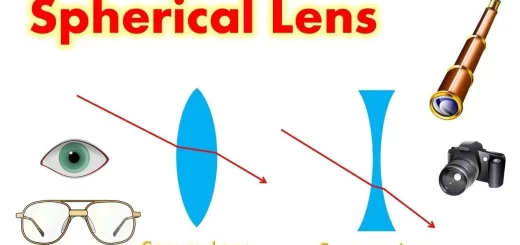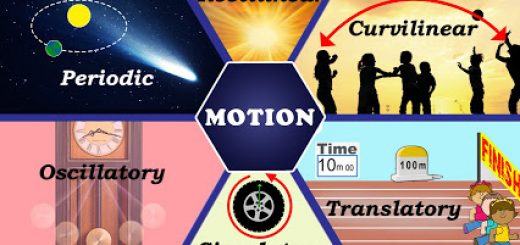Types of atomic spectra, Postulates of Bohr model and Spectrometer
The word atom goes back to a Greek origin, meaning the indivisible, Scientists put different models for the structure of the atom based on many experimental evidences, Bohr studied the difficulties faced by Rutherford’s model and proposed a model for the hydrogen atom using Rutherford’s findings.
Postulates of Bohr model
- There is a positively charged nucleus at the center of the atom.
- Negatively charged electrons move around the nucleus in shell, Each shell (loosely often called orbit ) has an energy value, Electrons do not emit radiation as long as they remain in each shell.
- The atom is electrically neutral since the number of negative charges (electrons) around the nucleus equals the number of positive charges in the nucleus.
He then added three more postulates:
- The electric forces (Coulomb’s law) and mechanical forces (Newton’s law) are applicable on the atom.
- We can estimate the radius of the shell from the following relation: 2 π r = n λ, Where: (r) radius of the orbit, (n) number of standing waves which associated with the motion of the electron (integer number greater than zero), (λ) wavelength of the standing wave which accompanied to electrons motion.
- If the electron moves from an outer shell of energy E2 to an inner shell of energy E1 (E2 > E1), an amount of energy (E2 − E1) is released in the form of a photon, whose energy Δ E = h ν = E2 − E1, where ν is the frequency of the emitted photon.
The line spectrum of hydrogen gas (Emission of light from Bohr’s atom)
When hydrogen atoms are excited (given energy), we will observe the following:
- Not all of them are excited the same way, Thus, electrons in different atoms move from the first level K (n = 1) to different higher levels (n = 2, 3, 4, …. ).
- We can calculate the energy of any level (En) in hydrogen atom from the relation: En = − 13.6 ( e V ) / n², Where: Energy (Joule) = Energy (e V) × Charge of the electron (Coulomb) 1 eV = 1.6 × 10−19 J.
- Electrons remain in excited levels (or states) only for a short period of time called lifetime (nearly 10−8 s) and then they revert to the lowest level (ground state).
- In going down from high energy level to low energy level, the electron emits a photon whose energy (h ν = E2 − E1), Where: ν is the frequency of the photon and its wavelength is λ = c / ν.
- The line spectrum of hydrogen consists of five groups or series.
Different series of atomic spectral lines for hydrogen are produced and are arranged as follows:
Lyman’s series: The electron moves down to level K (n = 1) from higher levels, Spectrum range is Ultraviolet range (short wavelength and high frequency).
Balmer’s series: The electron moves down to level L (n = 2) from higher levels, Spectrum range is visible range.
Paschen’s series: The electron moves down to level M (n = 3) from higher levels, Spectrum range is Infrared ( I R ) range.
Bracket’s series: The electron moves down to level N ( n = 4 ) from higher levels, Spectrum range is Infrared ( I R ) range.
Pfund’s series: The electron moves down to level O (n = 5) from higher levels, This series lies in the far IR and is the longest wavelengths (the shortest frequencies).
Calculating the energy of radiation:
Emission of maximum energy (shortest wavelength), When the electron moves from the level of energy (E∞) to low level of energy (En).
E∞ − En = h c / λ , E∞ = 0
Emission of minimum energy (largest wavelength), When the electron moves from a level of energy (En+1) to a low level of energy (En).
En+1 − En = h c / λ
Spectrometer
The spectrometer is a device used to obtain a pure spectrum by analyzing the light into its visible and invisible components, It is used in obtaining a pure spectrum, It is used in estimating the temperature of the stars and gases in it, Pure spectrum is a spectrum of non-overlapping colours and each has a certain wavelength.
Spectrometer structure
- A light source in front of which there is a rectangular slit whose width can be adjusted by a screw and this slit is at the focal point of a convex lens.
- A turntable on which a prism is placed.
- A telescope consisting of two convex lenses (objective and eyepiece).
Operation of the spectrometer to obtain a pure spectrum
- The slit is lit with a bright light that falls on one side of the prism.
- The prism is adjusted at the position of minimum deviation and the telescope is directed to receive the light passing through the prism.
- The prism analyzes the rays where rays of each colour emerge parallel to each other and not parallel to the rays of the other colours as each colour of the spectrum colours has its own deviation angle.
- The objective lens focuses the rays for each colour at the focal plane of the eye lens where we can see it.
The conditions of obtaining a pure spectrum by the spectrometer: The prism at the minimum deviation position and the parallel rays for each colour are collected at the focal plane of the objective lens.
Types of spectra
By studying the spectra of different materials whose atoms are excited, we will find two types of spectra which are Emission spectrum and the Absorption spectrum.
Emission spectrum
The emission spectrum is the spectrum resulting from the transfer of excited atoms from higher energy level to a lower level, There are two types:
- A continuous spectrum (connected) is a spectrum consisting of all wavelengths and frequencies in a continuous manner.
- Line spectrum is the spectrum occurring at special frequencies and not continuously distributed.
The line spectrum does not emit from the material until it is in the form of separated atoms or gaseous state under low pressure, Because the line spectrum is the spectrum which is resulted from the transition of excited atoms from the higher excited levels to lower energy levels and can’t excite the elements until it is in form of atoms, not molecules.
Absorption spectrum
When white light passes through a certain gas, some wavelengths in the continuous spectrum are found missing after analyzing, these wavelengths are the same as those that appear in the emission spectrum of the gas and are called the line absorption spectrum.
The line absorption spectrum is dark lines of some wavelengths in the continuous spectrum of white light and these lines are due to the absorption of the vapor of the element to the spectrum lines characterizing it.
This proved that there are hydrogen and helium elements in the solar envelope where the spectrum of the Sun contains the absorption spectrum lines of helium & hydrogen which are called Fraunhofer lines, Fraunhofer lines are absorption spectrum of the elements in the Sun helium and hydrogen elements.
Compton effect, Photon properties, Electron microscope and Optical microscope
Atomic emission spectra, Bohr’s atomic theory & Wave mechanical theory of the atom



